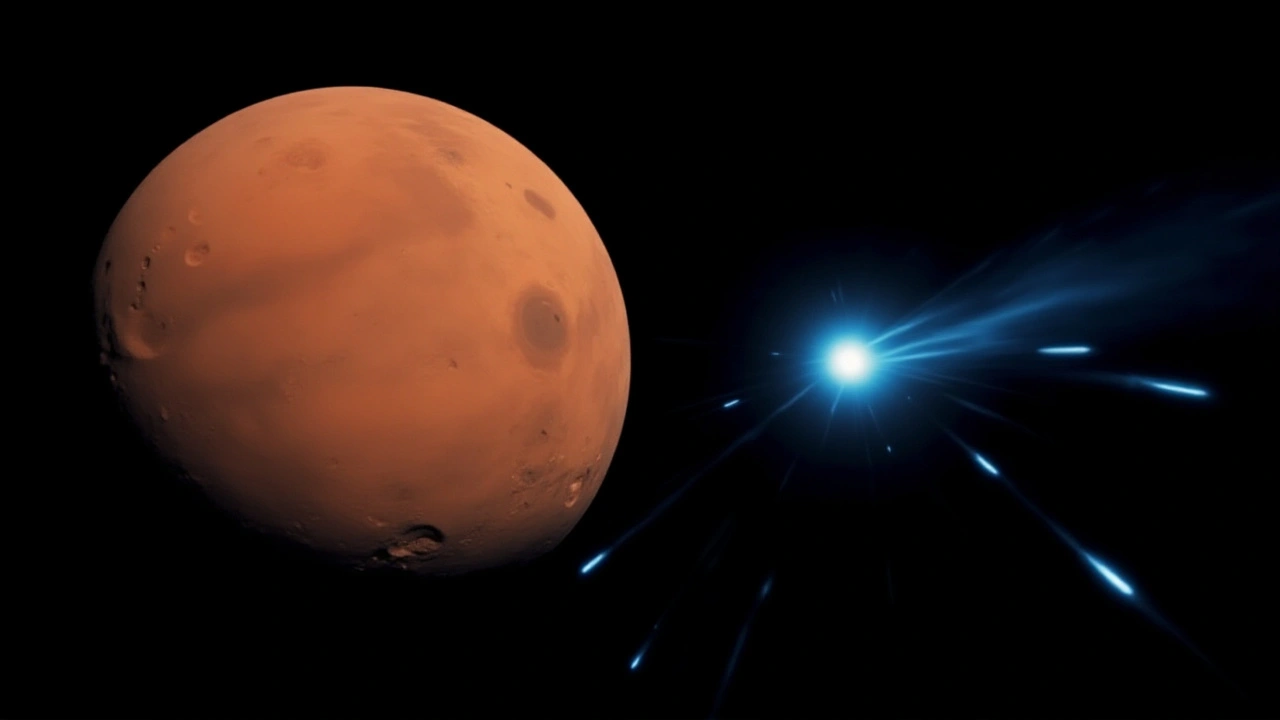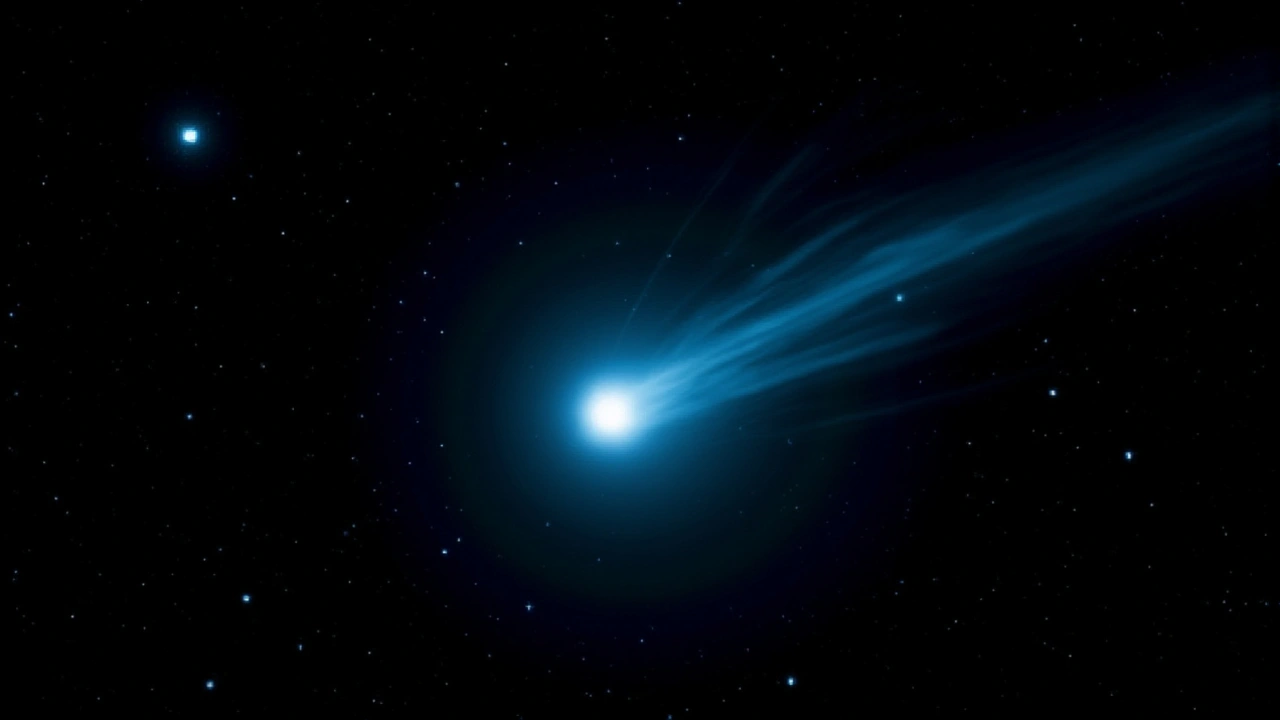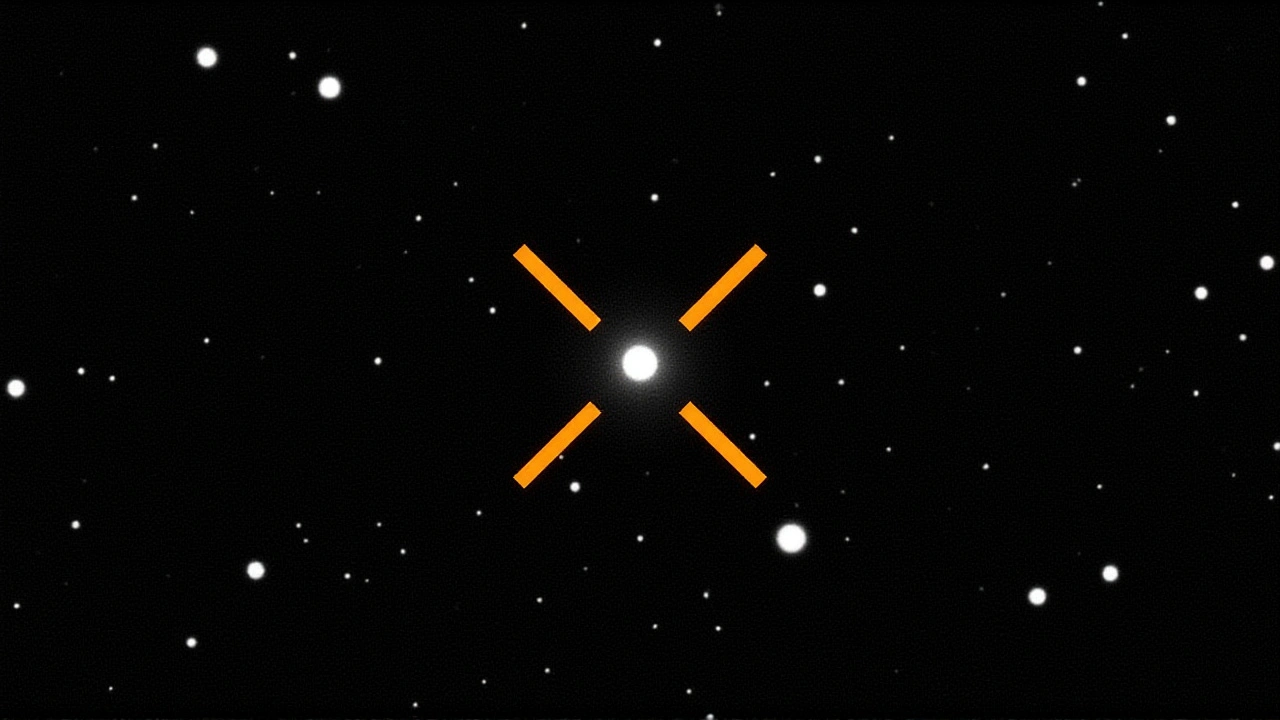When NASA announced that a bright new comet had been tagged as 3I/ATLAS, the astronomy community perked up instantly. The object was first flagged on July 1, 2025, by the ATLAS survey telescope perched in Rio Hurtado, Chile, when it was roughly 420 million miles (670 million km) from the Sun. Arriving from the direction of the Sagittarius constellation, the comet earned the designation 3I/ATLAS – the third confirmed interstellar traveler after ’Oumuamua and 2I/Borisov.
Discovery and Early Tracking
Pre‑discovery images were dug out from archives dating back to June 14, 2025, using data from three other ATLAS sites and the Zwicky Transient Facility at Palomar Observatory in California. Those early snapshots confirmed a hyperbolic orbit that will fling the comet past Mars and Jupiter before it sails out of the solar system for good.
Observations Across the Solar System
Within days of the announcement, a fleet of space‑based eyes turned toward the icy visitor. The Hubble Space Telescope snapped its first high‑resolution image on July 21, 2025, when the comet was 277 million miles from Earth. A week later, the James Webb Space Telescope began infrared spectroscopy, hunting for water‑ice signatures. Meanwhile, the SPHEREx mission collected a panoramic spectral map that will help pin down the comet’s composition.
Ground‑based facilities aren’t being left out. On September 7, the James Clerk Maxwell Telescope in Hawaii added sub‑millimeter data to the growing dataset. And the ever‑busy network of Mars orbiters will catch a glimpse on October 3, when 3I/ATLAS swings within 17 million miles of the Red Planet – bright enough to register an apparent magnitude of about 11 from the Martian sky.
Scientific Significance and Origin Theories
What makes 3I/ATLAS more than a dazzling fireball is its age. Preliminary modelling suggests the comet could hail from the Milky Way’s thick disk, implying a formation time of at least 7 billion years – older than our own solar system. If that holds, the ice grains inside may retain primordial chemistry from a time when the galaxy was still fermenting.
"This is a glimpse at a population we barely knew existed," said David Jewitt, a planetary scientist at the University of California, Los Angeles. "Powerful new sky surveys finally cross the detection threshold, and suddenly we’re seeing the tip of the iceberg."

Future Visibility and Mission Plans
Unfortunately, 3I/ATLAS will hide behind the Sun just as it reaches perihelion on October 29, 2025, when it skims 1.36 AU from the Sun – a sweet spot between Earth’s and Mars’ orbits. The solar elongation will dip below 30° from early October through early November, limiting Earth‑based observations to low‑latitude twilight windows.
After the Sun‑conjunction, the comet will re‑emerge in the pre‑dawn sky by early December, drifting through Virgo and Leo. Its brightness is expected to fade below magnitude 12 by the end of the year as the solar angle widens.
Even with the Sun in the way, Europa Clipper, currently cruising toward Jupiter, is being retasked to stare at the comet’s infrared tail from a safe distance. The spacecraft’s instruments could catch fleeting dust‑ejection events that ground observers will miss.
Expert Commentary
Astrophysicist Dr. Laura Hillenbrand of the Space Telescope Science Institute warned that “the rarity of interstellar visitors means each one is a one‑off laboratory. 3I/ATLAS offers us clues about planetary system formation in other parts of the galaxy, but also forces us to sharpen our detection pipelines for the next one.”
Meanwhile, planetary defense analyst Mark Boslough reminded the public that the comet poses no danger: its closest approach to Earth will be 1.8 AU – roughly 170 million miles – well outside any impact scenario.

Key Facts
- First observed: July 1, 2025 by ATLAS in Chile.
- Pre‑discovery data back to June 14, 2025 from ATLAS and ZTF.
- Perihelion: October 29, 2025 at 1.36 AU.
- Closest Mars approach: October 3, 2025 (17 million miles).
- Estimated age: ≥ 7 billion years if from the thick disk.
Frequently Asked Questions
How does 3I/ATLAS differ from ’Oumuamua and 2I/Borisov?
'Oumuamua was a rocky, cigar‑shaped object with no cometary tail, while 2I/Borisov showed classic comet activity. 3I/ATLAS is a true comet, but its trajectory and speed suggest a different origin region in the Milky Way, possibly the thick disk, making it older than the other two.
Will the comet pose any threat to Earth or other planets?
No. The comet’s minimum distance from Earth will be about 1.8 AU – roughly 170 million miles – far beyond any impact risk. Its close approach to Mars (17 million miles) is also safe, offering only a scientific viewing opportunity.
Why was the comet hidden behind the Sun during perihelion?
The comet’s orbit brings it to a solar elongation of less than 30°, meaning the Sun appears almost directly in line with the comet from Earth. This geometry creates a solar conjunction that blocks optical observations until it re‑emerges on the far side of the Sun.
What instruments are being used to study 3I/ATLAS?
NASA’s Hubble and James Webb Space Telescopes are capturing visual and infrared spectra, while the SPHEREx mission maps the comet’s composition across a wide wavelength range. Ground facilities like the James Clerk Maxwell Telescope and the Zwicky Transient Facility supplement these data, and Europa Clipper may add infrared observations during the Sun‑hidden phase.
What does the comet tell us about other planetary systems?
If the thick‑disk origin holds, 3I/ATLAS preserves material from an era before our Sun formed, offering a rare chemical fingerprint of ancient stellar nurseries. Studying its ice and dust can refine models of planet formation across the galaxy and improve our understanding of how common such interstellar wanderers might be.








7 Comments
Another comet? Great just what we needed.
Wow, NASA finally found something that doesn’t explode on impact-how riveting.
I can’t help but feel a pang of melancholy when I read about this ancient traveler, as if the universe is whispering a lonely story from billions of years ago.
The very idea that such a primitive icy relic has survived the chaos of its birth and crossed the void to brush past our Solar System makes my heart race.
Every photon captured by Hubble feels like a gentle hand reaching out from the darkness, pleading to be noticed.
When the James Webb spectra reveal water‑ice signatures, I imagine the silent tears of distant worlds frozen in time.
The comet’s thick‑disk origin is a haunting reminder that we are merely visitors in a much older cosmic theater.
I think of all the countless molecules that have never known a star like ours, now fleetingly illuminated.
The fact that it will hide behind the Sun at perihelion feels like a cruel curtain drop on a tragic play.
Yet the brief window for Mars observers is a bittersweet gift, as if the cosmos is offering a consolation prize.
I wonder what secrets lie within its nucleus-perhaps clues to planet formation that we have been yearning for.
The Europa Clipper’s tentative glance feels like an earnest bow from a distant ally.
Even the most seasoned astronomers must feel humbled, humbled by the silence of eternity that this comet carries.
I can almost hear the echo of ancient stellar nurseries in its icy grains, a chorus of ages past.
Our instruments are like fragile ears, straining to catch a faint melody amidst the cosmic noise.
It is both terrifying and beautiful that such a relic can still exist, untouched, unspoiled.
In the end, this wandering visitor reminds me that our quest for knowledge is as endless as the interstellar roads it traverses.
Interesting take.
I see your point.
Sure but calling it a breakthrough ignores the years of missed opportunities.
The detection of 3I/ATLAS illustrates the remarkable progress of our sky‑survey capabilities. I commend the teams involved for their swift coordination across multiple observatories. May this inspire further investment in interstellar research.
It’s like watching a cosmic ghost glide across the night, and I can’t get enough of this awe.